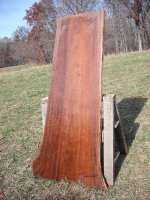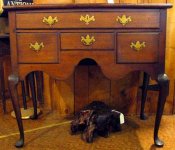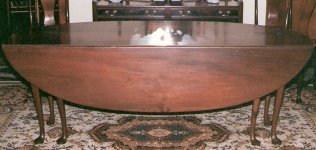jacon4
Well-known member
Merry Christmas everyone,
I just got a walnut slab to make a new tabletop for a period QA table, Anyone have any experiences/ suggestions with building single board tabletops. This top will be
24"W X 44" long or so, i would like to avoid cupping and or splitting of the top. Breadboard ends? no breadboard ends? Anyone here tried chemical treatments like PEG/ Pentacryl prior to construction?
Thanks, james
I just got a walnut slab to make a new tabletop for a period QA table, Anyone have any experiences/ suggestions with building single board tabletops. This top will be
24"W X 44" long or so, i would like to avoid cupping and or splitting of the top. Breadboard ends? no breadboard ends? Anyone here tried chemical treatments like PEG/ Pentacryl prior to construction?
Thanks, james



